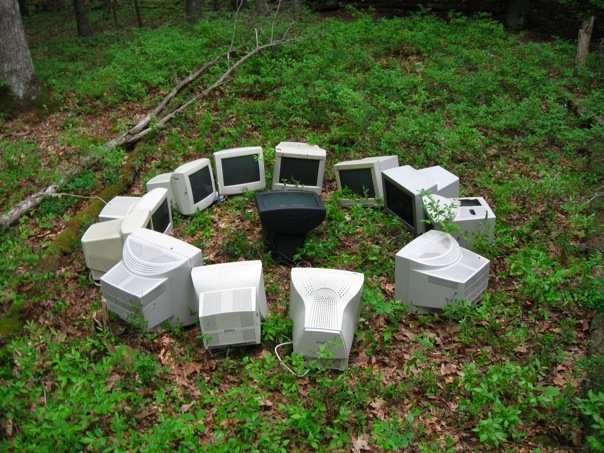
Remember when the internet was young? Courtesy of Zachary Veach / CC
Part 3 of a 5 part series
As we gear up for the next round of primary voting, we bring you the next installment of our Election Moments series. Let’s take a look back at our favorite media moments from the Year of the Internet.
Picture 2004. Facebook and Gmail had just been born, and YouTube was but a twinkle in the eyes of three ‘netwise’ PayPal employees. If 2008 was the Election Year of Social media, 2004 was the Election Year of the Internet, back when it still had a capital ‘I’. Pew’s Internet and American Life Project dedicated an entire essay to the argument that John Kerry’s tardiness to the internet game doomed his 2004 election campaign, Howard Dean picked up the slack, and MTV explained it all to politically disillusioned youth.
Before things could go viral: flip-flops, Dean Screams, and MTV
Remember the Kerry Flip-Flop, that time that Kerry appeared on Meet the Press and expressed an opinion about the Bush tax cut plan that conflicted with a statement from a year earlier? The interviewer called him on it, his campaign manager cringed, and then everyone figured it would promptly be forgotten. In the time before the internet, they might have been right. But as we now know the internet leaves no stone unturned.The Bush campaign jumped on it. There were flip flop costumes. There were flip flop cupcakes. And, of course, there were a whole lot of actual flip flops. We’d call it a meme, but those didn’t exist yet.
Once the Kerry campaign realized the damage, it was too late. His campaign staff employed the old Rubber v. Glue comeback, but, as anyone who has been a child knows, it was an unsuccessful tactic.
While the internet tripped Kerry up, Howard Dean leveraged online networks to disseminate his message more broadly, enable supporters to organize in their own communities, and involve voters in a more interactive way. Sound familiar? Back then it wasn’t. But if the internet was Howard Dean’s best friend, the broadcast networks were not. In January of 2004, in an Iowa caucus concession speech, a hoarse Howard Dean yelled a little too loudly into a unidirectional microphone. The clip, thereafter referred to as the ‘Dean Scream’ was replayed by cable and broadcast networks 633 times in four days. In that way, Howard Dean’s experience in the limelight is comparable to that of today’s viral internet personalities, and maybe always will be. After all, “the flame that burns twice as bright burns half as long” dates back to the 4th century BCE.
Of course, we know the outcome. George W. Bush won re-election by a very small margin (about 3 million votes), a success that has been attributed largely to the Bush-Cheney campaign’s multi-faceted, targeted grassroots approach. They didn’t just rely on new technology to get out the vote for them but instead used it to bolster the cohesiveness and effectiveness of an already-robust field operation. The 2004 presidential election serves as a reminder that the internet, despite its seeming omnipotence, is still not a replacement for good old grassroots organizing. We hope it never is!
If we were only just beginning to feel the impact of the internet, cable was in its heyday. MTV successfully motivated 18-24 year-olds to engage with a political process from which they were feeling increasingly disaffected. MTV’s Choose or Lose campaign featured political news reports, commentary, and interviews with presidential candidates delivered by celebrity correspondents like Christina Aguilera, Sean Combs a.k.a. “P. Diddy,” and Drew Barrymore. If you’re having trouble remembering a time when those celebrities were popular with 18-24 year-olds, just imagine Justin Bieber, Taylor Swift, or any of the Kardashians interviewing presidential candidates and live streaming it on Twitter (because that’s a thing now).
Do you remember the 2004 election? What was your favorite media moment? Tell us about it in the comments.